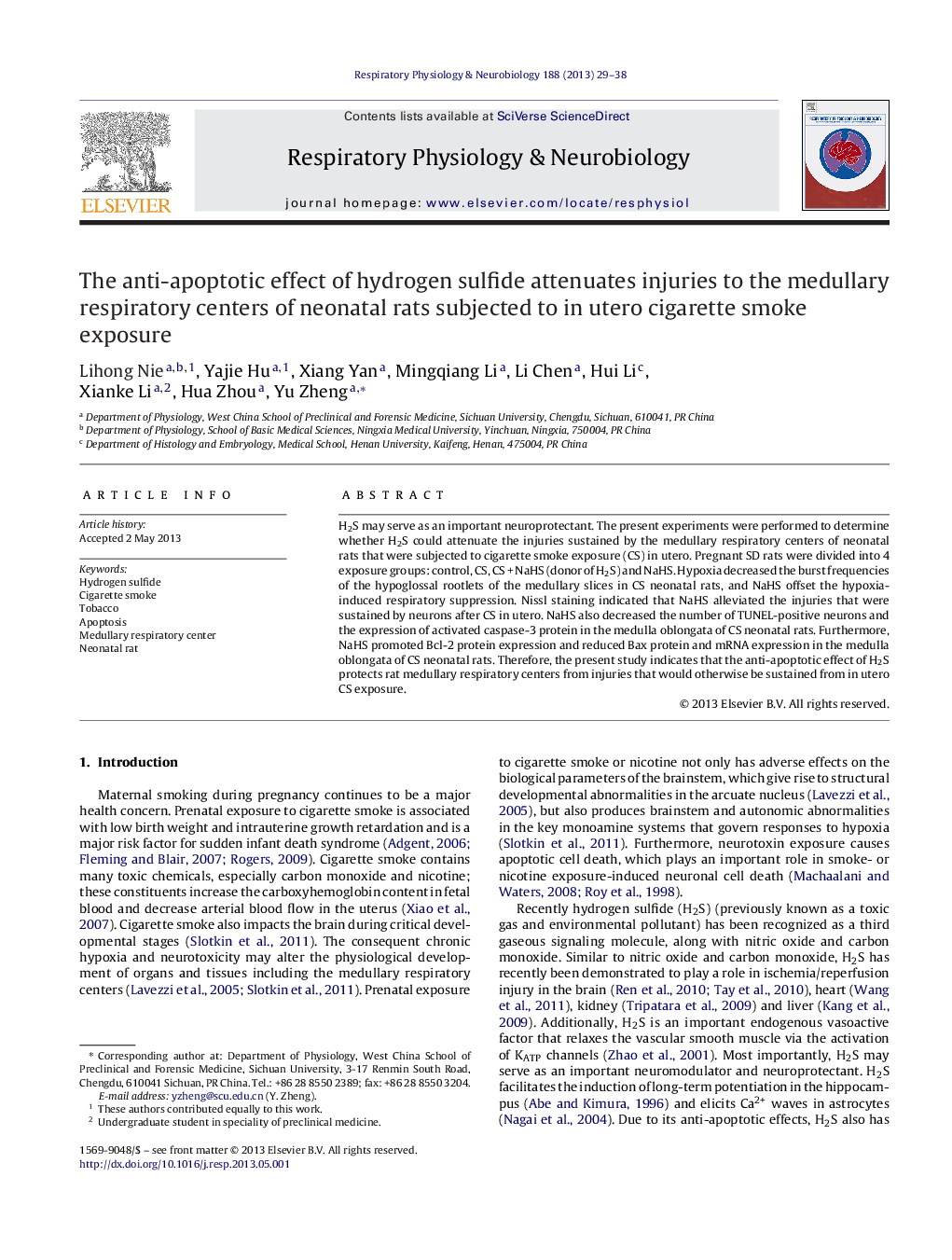| Article ID | Journal | Published Year | Pages | File Type |
|---|---|---|---|---|
| 5926196 | Respiratory Physiology & Neurobiology | 2013 | 10 Pages |
â¢Hypoxia inhibits the medullary respiratory rhythm of rats exposed to smoke in utero.â¢H2S offsets the hypoxia-induced respiratory suppression.â¢H2S alleviates injuries sustained by neurons after utero cigarette smoke exposure.â¢H2S decreases the number of apoptotic neurons and expression of caspase-3 protein.â¢H2S promotes Bcl-2 protein expression and reduces Bax protein and mRNA expression.
H2S may serve as an important neuroprotectant. The present experiments were performed to determine whether H2S could attenuate the injuries sustained by the medullary respiratory centers of neonatal rats that were subjected to cigarette smoke exposure (CS) in utero. Pregnant SD rats were divided into 4 exposure groups: control, CS, CSÂ +Â NaHS (donor of H2S) and NaHS. Hypoxia decreased the burst frequencies of the hypoglossal rootlets of the medullary slices in CS neonatal rats, and NaHS offset the hypoxia-induced respiratory suppression. Nissl staining indicated that NaHS alleviated the injuries that were sustained by neurons after CS in utero. NaHS also decreased the number of TUNEL-positive neurons and the expression of activated caspase-3 protein in the medulla oblongata of CS neonatal rats. Furthermore, NaHS promoted Bcl-2 protein expression and reduced Bax protein and mRNA expression in the medulla oblongata of CS neonatal rats. Therefore, the present study indicates that the anti-apoptotic effect of H2S protects rat medullary respiratory centers from injuries that would otherwise be sustained from in utero CS exposure.
